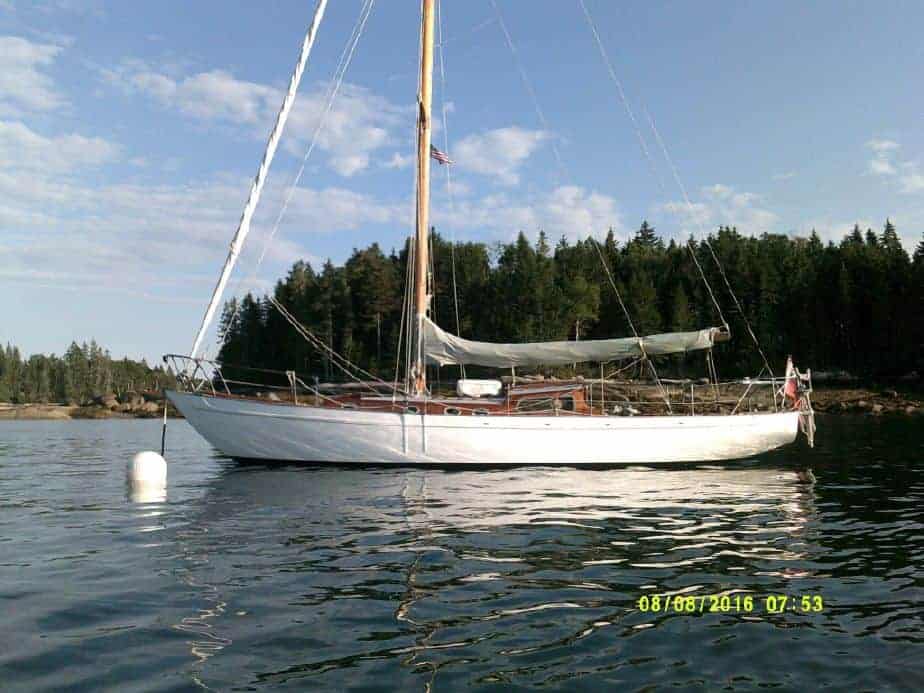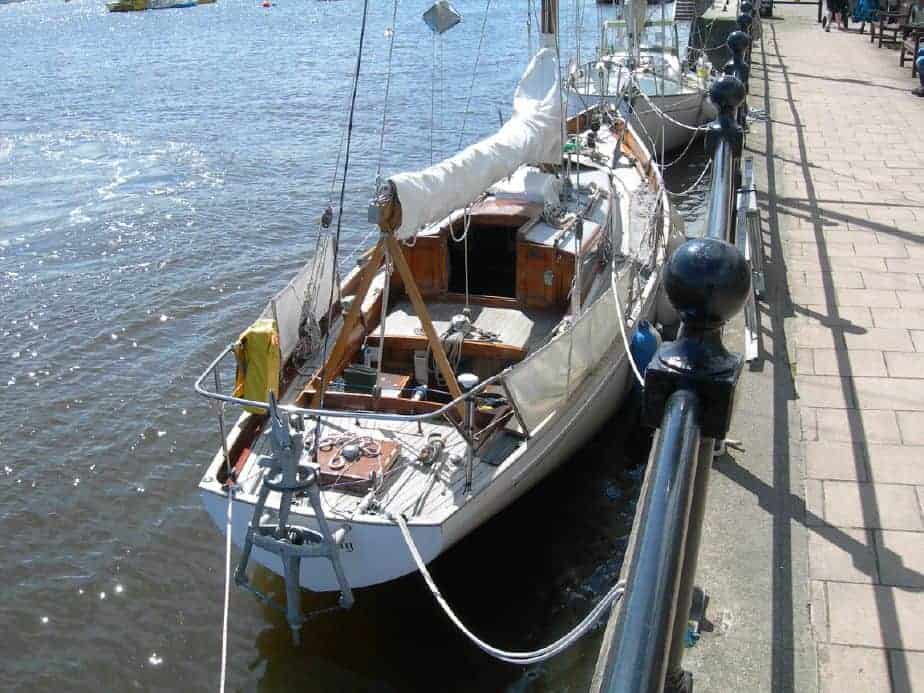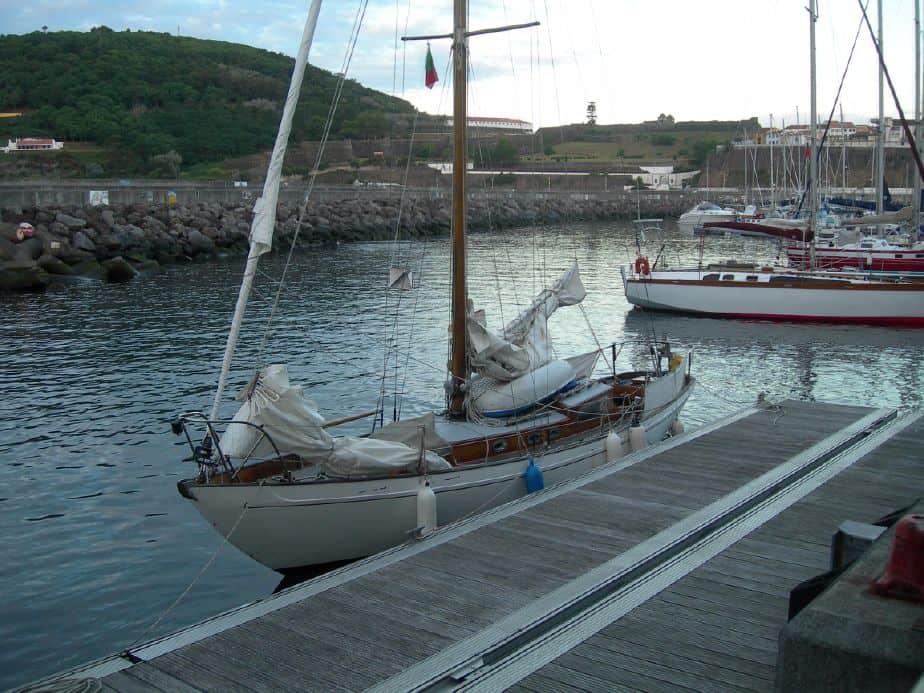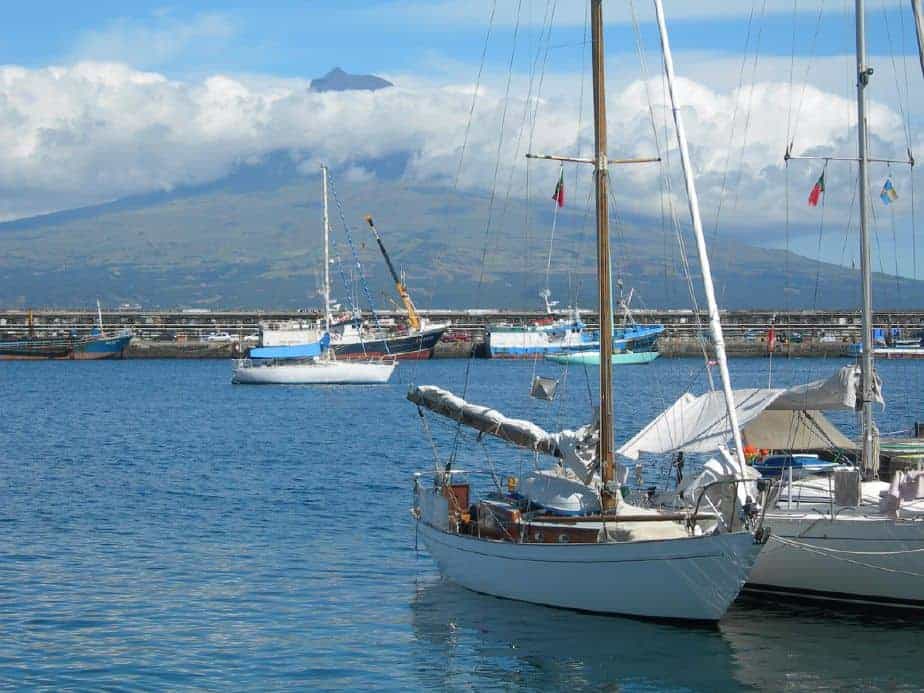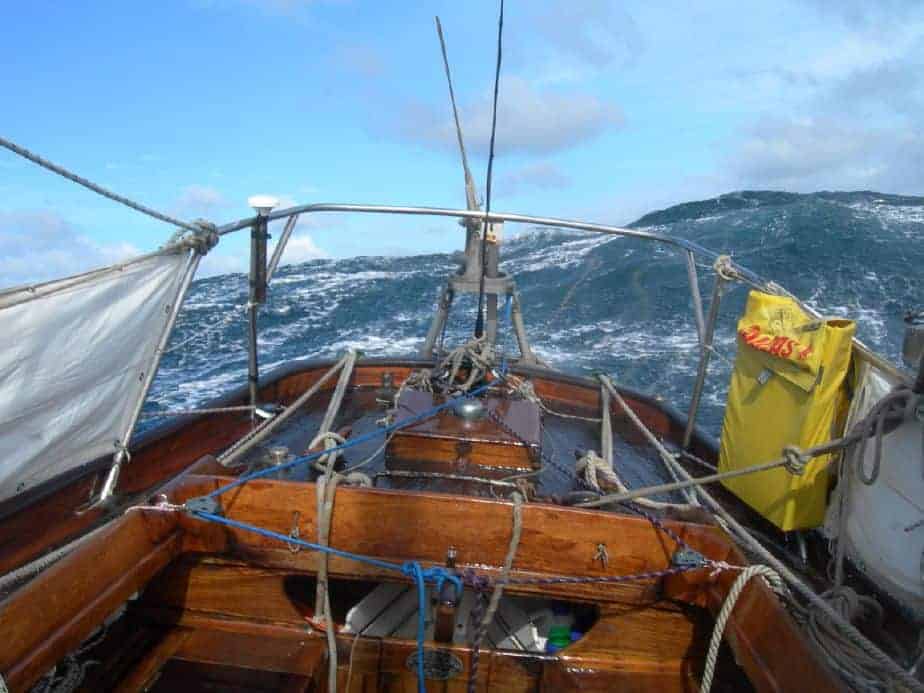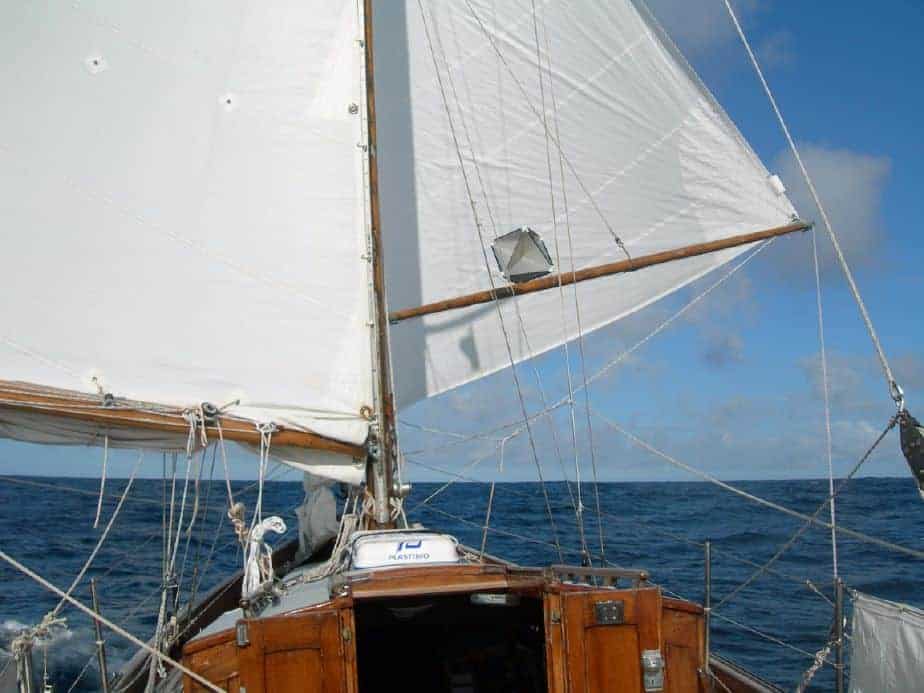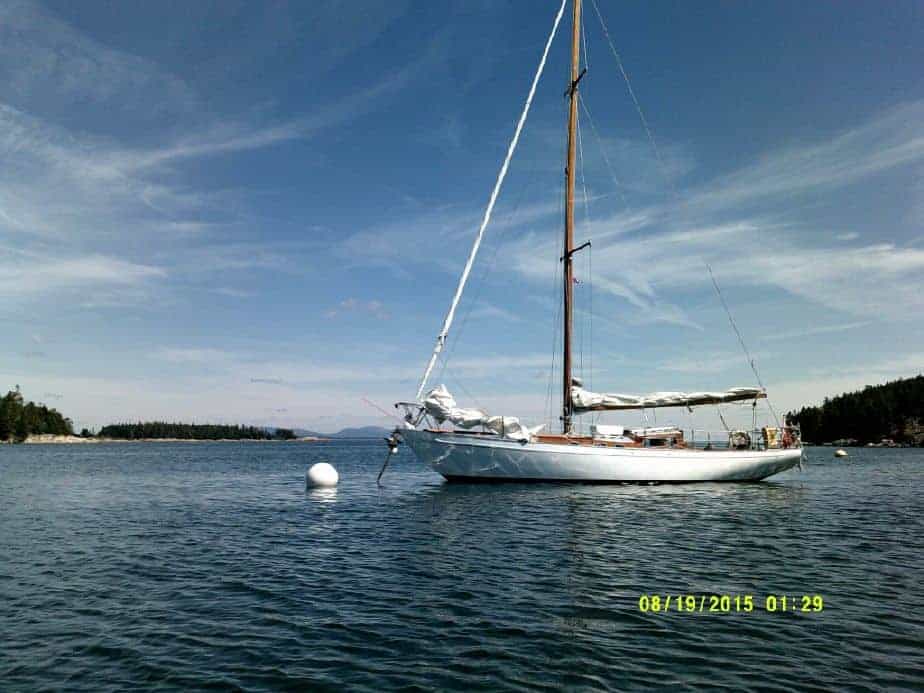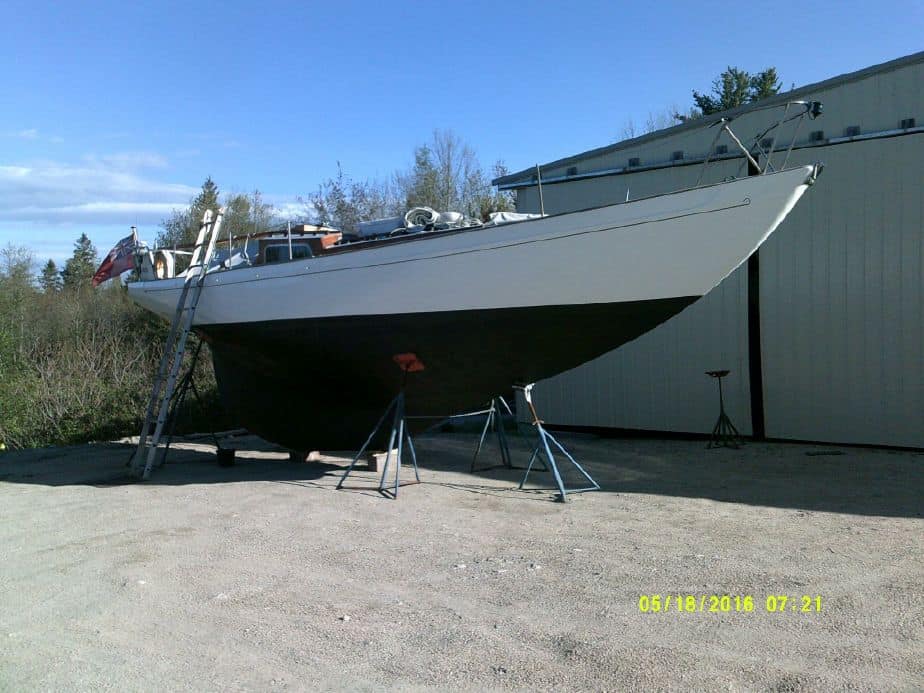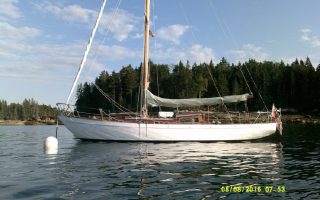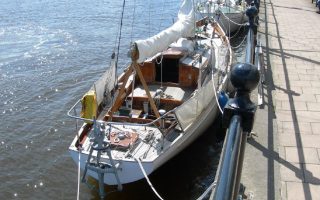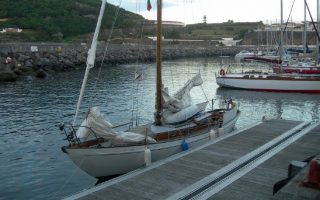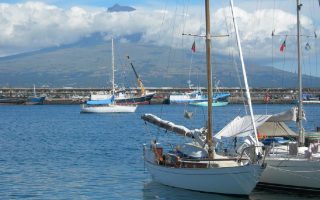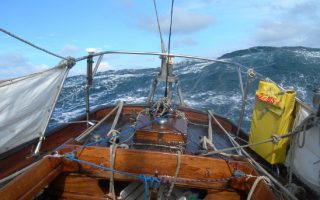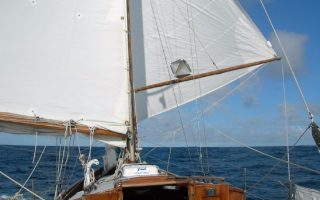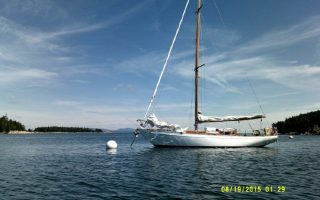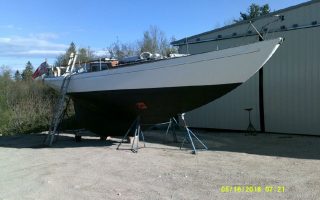Off Center Harbor's Remarks
The phrase that stuck with us as we read through this listing was “kept to her original beauty.” This is often the hard part when it comes to classic boats, Someone gets ahold of them and adds something “modern” to the mix. But there is none of that on BOOMERANG; she is just like she was when she was new, except for a generous dollop of patina. But this doesn’t mean she isn’t a tough little ship. In fact, four years ago she sailed across the Atlantic and then up to Maine. Her owner, and skipper, is a particularly seasoned mariner with many Ocean crossings under his belt. BOOMERANG is his pride and joy: “a boat of a lifetime” in the famous phrase.
Description from Boat's Main Listing
Built by Hugh McLean and Sons in 1955, BOOMERANG was built for the McLean family and spent much of it’s life in their care. Ten years ago Boomerang was purchased by the current owner who has sailed the boat extensively from Ireland south to the Azores and Canaries, across to the Bahamas and up the eastern coast of the United States. Along the way the boat has been well cared for and kept to her original beauty.
Here’s a YouTube video of the boat under sail in Penobscot Bay, Maine.
Specs
Keel: Full
Dimensions
LOA: 33 ft 5 in
Beam: 8 ft 3 in
LWL: 25 ft 3 in
Maximum Draft: 5 ft 3 in
Engines
Total Power: 18 HP
Engine 1:
Engine Brand: Volvo
Engine Model: 2000 Series
Engine Type: Inboard
Engine/Fuel Type: Diesel
Propeller: Folding propeller
Engine Power: 18 HP
Owner’s Comments
The rig is Bermudan sloop, but with an extra inner forestay from the upper spreaders to the stemhead. The mainsail has three reefs, the third very deep, a 120% genoa on a Furlex roller furler, a working jib which sets on the inner forestay, and a storm jib.
She is planked with Honduras mahogany on English oak frames and backbone; the deck (still the original) is yacht-laid teak, secret-fastened; the cabin and doghouse sides, cockpit, covering boards and bulwarks are teak also. Cabin and doghouse tops are T and G teak, overlaid with cloth/epoxy.
The mast carries a tall double-spreader rig (42′ above the deck) with the conventional 4 shrouds, and is glued spruce, probably slightly hollowed; the boom and spinnaker pole are solid spruce.
The construction is very strong: two well-spaced bilge stringers, well-tied at the ends; a full-length tapered sheer clamp inside the beam shelf; grown oak frames with two (and in way of the mast, three) bent timbers between them; plate floors on the grown frames tied into the principal keel bolts, forged strap floors on every bent timber; steel ring frames fore and aft of the mast partners down to the waterline to strengthen that important area.
Fastenings are principally copper nails/rivets, with some bronze bolts and iron rivets (common in British yachts of the period, and still sound).
There are some cracked timbers in places; these have been sistered and there is no sign of movement or trouble.
Flush-fitting hinged forehatch, conventional sliding main hatch, small removeable doors access interior from bridgedeck.
Below, engine is under the bridgedeck; galley to port, usual lockers, Plastimo propane stove with 2 burners, oven and grill; fresh water hand pump; pump to drain s/s sink; quarter berth to starboard, stowage under, now chart table and stowage above; saloon has 2 single berths, feet into trotter boxes, stowage under, charcoal cabin heater on bulkhead, starboard side of mast; heads in own compartment to starboard, sideboard to port; foc’sle has one berth to starboard (could be another to port), general stowage, anchor chain etc.
The engine is a 2000 series Volvo, 2 cylinder, 18HP, diesel, driving a 2-blade, folding prop, offset under the port quarter. Fuel tank is 6 gallon, under the cockpit sole. Stowage in the lazarette for at least a further 6 gallons.
Tiller steering, neat design with minimal intrusion in the cockpit.
Winches: 3 Lewmar on the mast, two for rope halyards (genoa and working jib), one for wire main halyard.
Anchors: 1 x 35 lb. CQR, 130 ft. of 3/8″ galv chain running through stemhead pawl system; 1 x 30 lb. CQR, 1 x 25lb fisherman, 15 ft of 3/8″ chain, various rode.
Usual warps, 4 good fenders.
2 bilge pumps, Whale Gusher 10 in cockpit, Henderson down below.
Navman plotter, AIS/SART receiver, ICOM M-411 VHF, Westmarine hand-held VHF, Autohelm 4000 autopilot, Solar panel charging through Victron Energy Controller.
Work done in the last ten years:
New propellor. Inner stern gland/greaser system refurbished. Old fuel tank replaced with new 6 gal. plastic tank.
Pawl fitted on stemhead roller for anchor chain.
New flexible rubber freshwater tanks (appr 20 gallons) fitted, 2009
Standing rigging renewed, dynema running backstays fitted (as per the original rig plan), new working jib and genoa, 2010.
Furlex furler fitted. New wire main halyard, 2012.
Bottom burnt off, checked over, repainted, 2012.
Baby Blake replaced with head, 2012.
Simple black water tank fitted ready for connection, 2012.
Mast stripped, inner forestay anchorage strengthened, new spinnaker pole made, 2012.
Vent fitted at fore end of foc’sle. 2012
Deck from bow to sheet winch pads seams reefed out, re-caulked and stopped. 2016
Foc’sle and saloon cabin sides and deckhead painted/varnished. 2016
Strengthening pads fitted inside and out in area of through-hull anode.2017
Some re-fastening (bronze screws) done at lower garboard and hood ends.2017
Sternpost to horn timber joint pressure-filled with Dolfinite compound. 2017
Lower garboard seams for 3′ in way of mast, splines removed, then traditionally caulked and stopped. (To provide flexibility). 2017
New bronze chainplates for cap/intermediate, and aft lower shrouds, made and fitted (through-bolted to steel strengthening inside). 2017
General condition:
Overall condition is good (she has recently sailed from Ireland to Brooklin Me, via the Azores, Canaries, Bahamas, New York with no serious issues, and there have been a number of regular occasions to inspect). Planking and frames, backbone, deckframe and floors, are sound. Forged strap and plate floors in the bilge are weeping rust, which looks poor, but they are still sound
Some splines in the topsides are showing signs of coming unglued on one edge, which cracks the paint in places, but there is no sign of water ingress when she’s sailing.
The deck is now as tight as any of this age has a right to expect.
The mast has had a slight bend in the middle portion for many years, but has given no trouble at all, even when lifted at the normal single point, just below the lower spreaders.
Running rigging, with the possible exception of the mainsheet, is in good condition.
Standing rigging and turnbuckles are sound
Brightwork on deck is OK, but starting to fade in places. The cockpit, though, lets the boat down and needs attention.
The mainsail is elderly, but still a good shape, and still moderately strong; likewise the storm jib. The working jib is only 7 years old and still very good. The genoa, the same age, is fairly light, but cut with too much overlap.
The engine runs perfectly, very economically, burning no oil. There is an issue with the starter, where the bendix sometimes doesn’t throw and engage; so sometimes it fires right up, sometimes after one or half a dozen goes – but it has never failed! Also the instruments are unreliable.
The echo-sounder is old and unreliable.
The cockpit has never been self-draining, an obvious drawback (but which, in my ownership, hasn’t been a serious issue)
Recommendations:
Remove splines from both sides of the garboard plank, clean the seams and caulk with cotton or oakum and stop with seaming compound. (To allow more flexibility, particularly in way of the mast, when sailed hard. Ideally do this for most or all of the bottom).
Remove the engine, fix the starter glitch, enable the instruments, renew the exhaust and gear cable link, clean and paint the bilge, improve the fuel tank installation.
Redo deck seams aft of the sheet winches.
Replace the mainsail and storm jib; recut the genoa, bringing the clew 3 feet forward.
Replace the echo-sounder.
Explore the possibility of making the cockpit drain itself. (In such a good seaboat, coastal cruising, it may not be necessary).
Particulars
- See This Boat's Main Listing on the Web
- Length:
- 33 ft
- Type:
- Sail
- Hull Material:
- Wood
- Designer:
- Laurent Giles
- Builder:
- Hugh Mclean and Sons
- Year Built:
- 1955
- Power:
- 18hp Volvo 2000 Diesel
- Asking Price:
- $22,500
- Name:
- BOOMERANG
- Location:
- Brooklin, ME, US
- Contact Name:
- Rockport Marine
- Contact Phone:
- (207) 236-9651

